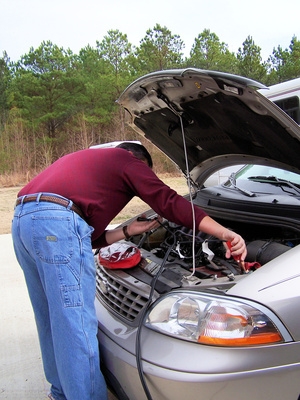
Some people believe disconnecting a car's battery with the engine running is an easy way to tell if the car's alternator is working. The problem with this line of thinking is that the battery does more than just provide power for the car's accessories. The alternator produces alternating current, which is converted to direct current to charge the battery. The direct current that is created, though, is not a purely direct current signal. This signal has a small alternating current component. The battery blocks this alternating current signal so it doesn't come in contact with the car's onboard electronics. Disconnecting the battery while the engine is running allows the alternating current signal to potentially damage the car's electronic components.
Attach the two alligator clips to the two wire leads on your high-current wire-wound high-resistance power resistor. The power resistor will take the place of the battery as an inductive load for the alternator.
Clip one alligator clip to the positive battery cable clamp on the positive battery post. Clip the other alligator clamp to the negative battery cable. By using a wire-wound power resistor, unwanted alternating current can be filtered through the inductance of the power resistor. The inductance of the power resistor will act as a filter to block the alternating current signal.
Loosen the battery cable clamp retainer bolts and lift the cables off the battery. The alligator clips must remain clamped to each battery cable as long as the engine is running and the battery is disconnected.